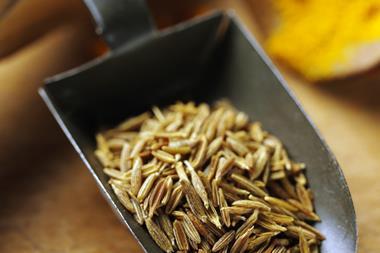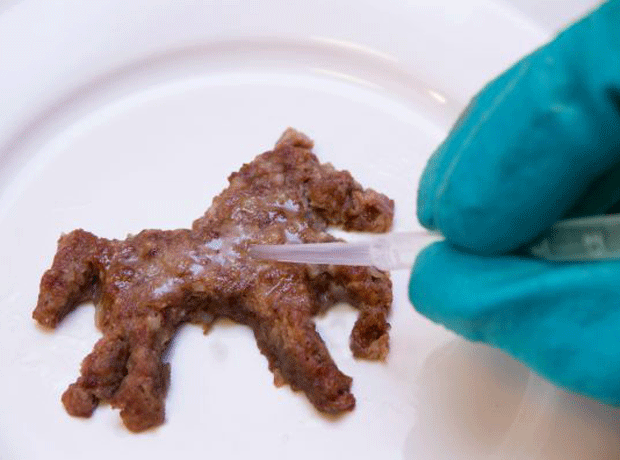It’s been described as bigger than horsemeat and referred to in the same breath as Sudan 1.
The discovery of nut protein in spice products such as fajita kits and chilli seasoning, and the growing list of product recalls, has been a wake-up call for the food industry - but how serious is the issue and how is the supply chain reacting to it?
Alarm bells initially rang on the other side of the Atlantic (see Timeline), prompting the FSA to start a cumin testing programme at ports, retail and wholesale, as suppliers began testing their own products. At the end of January, a batch of Bart Ingredients ground cumin tested positive for almond protein in the FSA sampling programme and was recalled. And, last week, internal testing by Santa Maria found contaminated paprika had resulted in almond protein making its way into fajita meal kits and some of its branded products. So far, only almond protein has been found in UK products while US recalls have involved peanut or almond.
Professor Chris Elliott - who led a government inquiry following the horsemeat scandal - claims nut contamination could be even more serious than Horsegate. “Although the horsemeat issue was widespread, there was no evidence a single person died or got ill,” he says. “What we are dealing with now are herbs and spices used in a huge number of products being contaminated with potentially dangerous allergens.”
While suppliers are vigilant for issues such as microbiological contamination and illegal dyes (including Sudan 1, which prompted a wide-ranging recall 10 years ago), they have not routinely looked for allergens.
“This is a new phenomenon and we have only started asking our suppliers to test for nut protein contamination in the past few weeks, since the news emerged,” says Tasneem Backhouse, sales and marketing director at EHL Ingredients.
Food security experts suggest allergen testing will become routine for some time to come.
Detection methods
There are two key methods of detection: ELISA, which tests for proteins; and DNA testing using polymerase chain reaction (PCR). In the case of almond, the issue is complicated by the lack of an accepted standard for a safe level of contamination. Michael Walker of scientific analysts LGC suggests that, based on reference doses for peanut and hazelnut, 10 parts per million (ppm) of almond in the ingredient being tested would be a suitable precautionary level. “Because spices are used at low levels - say 1% - in most foods, higher concentrations than 10 ppm of almond would be required to trigger an allergic reaction in most people eating the finished food,” he says. “ELISA can detect almond at 10ppm with little difficulty, and PCR is likely to be more sensitive,” he adds.
Bart Ingredients is questioning the veracity of the FSA results. A statement issued by Bart when it recalled its cumin described it as a ‘precautionary measure until the conclusion of investigations into detection methods’. The initial FSA sampling used ELISA, and Bart is waiting for further PCR results.
Experts say that, before products reach testing labs, producers need to be asking hard questions about the integrity of their supply chain.
“If there is any process not under their control they need to question it - they need to map the supply chain,” says Tony Hines, Leatherhead Food Research head of food security & crisis management.
Particularly so with complex products such as spice mixes containing ingredients sourced from different locations - including the developing world where controls may not be as strict as Western operations. Although, in the case of Santa Maria, its contaminated paprika was sourced from Spain.
“This was unexpected as this ingredient is not handled in facilities where nuts are present,” says Santa Maria UK country manager Martin Purdy.
And, of course, the most important question is - how did nut protein get into these ingredients in the first place?
While the horsemeat scandal was driven by deliberate passing off for financial gain, it remains to be discovered whether nut protein contamination is a result of fraud or supplier error - or a mix of both.
In the case of cumin, one theory is that the spice has been bulked out after India’s poor cumin crop caused prices to soar to a two-year high.
Elliott says there is, as yet, no evidence to suggest fraud. “Spices have a complex supply system,” he adds. “It is dangerous to assume it is criminal when it could be down to a bad manufacturing process.”
Indeed, as investigations continue, the nut issue has shown how far the industry has come since the horsemeat scandal. “Huge quantities of information have been passed across the industry quickly. Companies aren’t waiting for the disaster to unfold,” says Elliott - a view echoed by the FSA. With industry rumours that other ingredients may be drawn into the scandal, and fears of further recalls, this is positive news.
Timeline: nut contamination
- 26 Dec 2014: Texas-based Adams Flavors, Foods & Ingredients recalls 26 products after being notified by a supplier that cumin may contain peanut proteins
- Jan-Feb 2015: Further US and Canadian recalls over concerns cumin ingredients may contain peanut
- 18 Jan: UK’s FSA begins programme of testing ground cumin and cumin seeds at ports.
- 23 Jan: FSA testing extends to retailers and wholesalers.
- 31 Jan: Bart Ingredients recalls batch of ground cumin after FSA detects ‘potential’ presence of almond.
- 12-14 Feb: Morrisons and Aldi Fajita Meal Kits recalled due to undeclared almond
- 16 Feb: Santa Maria recalls Discovery Taco Seasoning in UK, and products in other countries, due to undeclared almond. FSA confirms paprika is likely source of almond in Santa Maria product.
- 18 & 19 Feb: Santa Maria recalls more lines, including Tesco and Sainsbury’s Mexican meal kits



















No comments yet